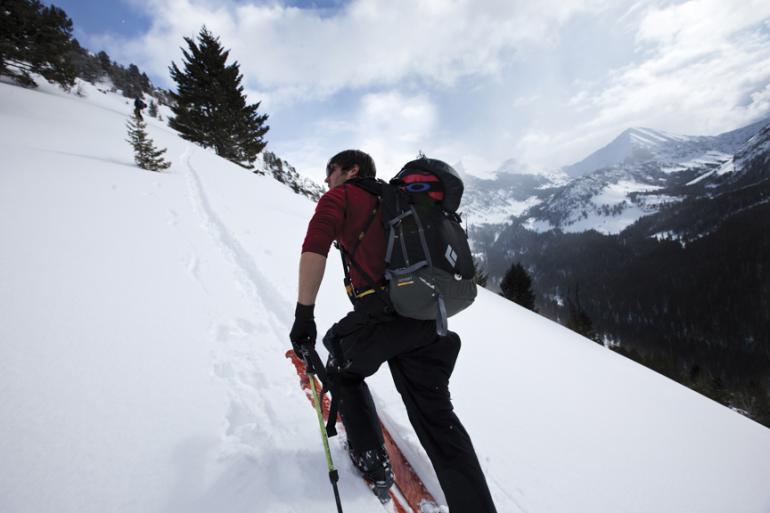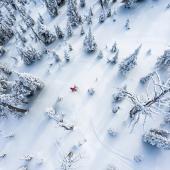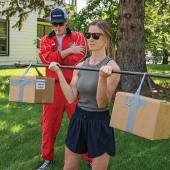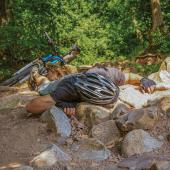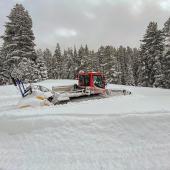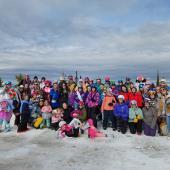The Best Offense
The secret to keeping those small nagging pains from becoming chronic injuries is often early intervention. Here are a few tips for some common pains you may encounter this winter.
Knee Pain
SCENARIO: After half a day of skiing, you notice some mild pain around your knee. There hasn’t been any trauma to the knee, just a gradual onset of pain.
WHAT TO DO: The stress on your quads during the opening runs has taken its toll and you need to slowly work your way back into the ski season. Back at the lodge or your car, perform some stretches, focusing on the quads and hamstrings (Fig. 1, 2). And use your glutes—by engaging your gluteal muscles more while skiing, it will take some stress off the quadriceps and knees.
Foot Pain
SCENARIO: You hiked the Ridge yesterday, and today you have foot and heel pain. In fact, it hurts so badly that you can hardly walk this morning. As your day goes on, the foot starts to feel a little better but you still struggle to maintain a normal walking pattern.
WHAT TO DO: This could be the start of a condition called plantar fasciitis (an inflammation of the broad ligament at the bottom of your foot). Gently stretch the calf muscle, as this will help elongate the tissue at the foot (Fig. 4, 5). Take stress off the plantar fascia; continued irritation can prolong the healing process. Wear shoes with an arch support, or tape the foot to take off some of the pressure. Until you feel better, try doing some other activities for a short period that doesn’t aggravate the condition.
Shin Pain
SCENARIO: The day following a long snowshoe, your shins are really aching. The motion during snowshoeing required an increased use of your shin muscle compared to walking; the repetitive overuse of this muscle tugged on the shinbone and caused irritation to its outer layers.
WHAT TO DO: Provide stability to the shin using a compression sock or ace bandage. Ice the shin, and then stretch the shin and calf muscles (Fig. 3, 4, 5). Gentle self-massage to the painful area can also be helpful. Ease your way back to activity; once the pain has calmed down and you can walk without pain, shorten the duration and intensity of the snowshoe. Slowly progress as pain allows.
Annalisa Fish, DPT is a Doctor of Physical Therapy at Vail Physical Therapy in Bozeman.

